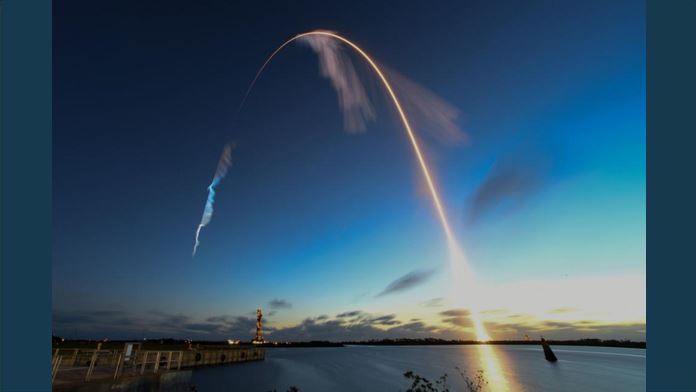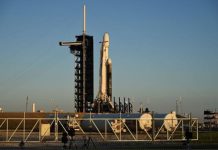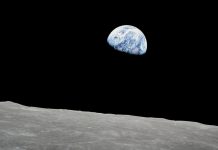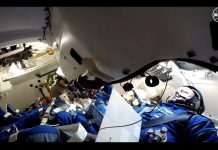
KENNEDY SPACE CENTER, Fla., Dec. 20 (UPI) — An uncrewed Boeing Starliner space capsule failed to reach the International Space Station after launching Friday, potentially delaying NASA’s plans to start launching astronauts from U.S. soil again.
NASA and Boeing officials said they would attempt to bring the capsule back to White Sands Missile Range in New Mexico in 48 hours and refurbish it for another launch.
NASA Administrator Jim Bridenstine said the agency still would consider sending astronauts on the capsule for its next mission, but officials would be investigating the root cause of the problem before a decision is made.
Bridenstine said he spoke to Vice President Mike Pence after the launch and was assured of the administration’s support for the space program.
“He maintains that he is very positive as the chairman of the National Space Council in our ability to once again launch American astronauts on American rockets from American soil,” Bridenstine said.
Despite the problem, Bridenstine said many things did go right. Chief among those was the performance of United Launch Alliance’s Atlas V rocket, which had been altered and designed specifically for the new capsule.
“Today we had a lot of successes,” Bridenstine said. “One of the biggest successes was watching the NASA team, the Boeing team and ULA team work together” in a crisis.
The teams made the right decision by directing the spacecraft to scrap the mission to the space station, said Bridenstine and Jim Chilton, senior vice president with Boeing.
Steve Stich, a deputy manager with NASA’s Commercial Crew Program, said the agency learned a lot about how the spacecraft will perform.
“The team didn’t have a lot of data to make decisions, but the team did the right thing and put the Starliner spacecraft in a safe orbit,” Stich said. “We learned a lot today about the launch vehicle and the spacecraft.”
Bridenstine said NASA is committed to being transparent no matter what kind of challenges the program encounters.
NASA said the capsule burned fuel too quickly because of an error in the automated system that maintains mission timing, causing the capsule to act as if it was in orbit to approach the space station when it wasn’t.
Flight controllers tried to send commands to reset the timer, but the capsule was unable to receive them because it was temporarily out of range of communication satellites.
“This anomaly has to do with automation,” Bridenstine said. “If we would have had crew in there, number one, they would have been safe,” and the crew might have been able to correct the problem.
Astronauts who are slated to fly on Starliner said they would have taken over control had they been on board.
“So we have the capability on board to stop the automation and take over manually to fly… to a point where we are manually firing thrusters,” astronaut Nicole Mann said. “We have the capability to live on board for an extended period of time and then we would come back in this case.”
The capsule lifted off at 6:36 a.m. EST from Launch Complex 41 at Cape Canaveral Air Force Station, Fla. The sky had just started to brighten on the eastern horizon, with a thumbnail moon glowing above. The rocket and its contrail were then illuminated by the presunrise light.
The rocket’s performance “hit a bullseye,” said Tory Bruno, CEO of United Launch Alliance.
“I’ll echo the great human-rated Atlas performance,” Chilton said. “That was a big success.”
After 36 minutes into the mission, flight controllers announced that the Starliner capsule itself wasn’t flying in the proper attitude, or position.
As of midday Friday, Starliner was in a stable orbit and had turned its solar panels toward the sun to maintain fully charged batteries.
It was supposed to be the beginning of a 25-hour journey to the International Space Station to prove that Starliner is ready to carry astronauts into space, which hasn’t happened from U.S. soil since the shuttle program ended in 2011.
NASA is negotiating with Russia to purchase more seats in Soyuz capsule, said Joel Montalbano, deputy manager of NASA’s International Space Station program. Buying more seats is intended to prevent rushing Starliner or Crew Dragon into service, he said.
The Starliner test is the next step in a “mighty vision” that began at the end of the space shuttle era to make space a commercial enterprise, Bridenstine said at Kennedy Space Center on Thursday.
That’s because the capsule was designed and built entirely by Boeing, in a competitive bid process won by Boeing and SpaceX. In the past NASA designed the Apollo capsules and the shuttle.
“NASA wants to be one customer of many customers in a very robust commercial marketplace for human spaceflight in the future,” Bridenstine said.
The test flight carried Rosie, an Anthropometric Test Device, that will measure the stresses, pressure astronauts would experience. It also carried 600 pounds of cargo intended for the station.
NASA has been buying seats in Russian Soyuz capsules since the shuttle’s last flight, at a cost of up to $80 million. The last purchased seat is scheduled for April.
Boeing has staked its reputation in space technology on the flight, even as it faces serious problems in its passenger jet business.
Bridenstine said the new spacecraft should help usher in a new age that sees private astronauts flying, as well as more commercialization of low-Earth orbit.






